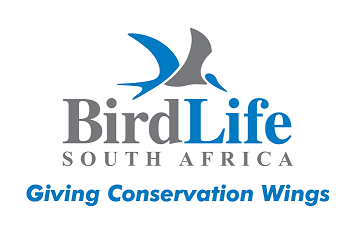CAR summary data
Habitat and noted behaviour
Sightings per Kilometre
Please note: The below charts indicate the sightings of individuals along routes where the species has occured, and NOT across all routes surveyed through the CAR project.
Regional Status


IUCN Data (Global)
IUCN 2024. IUCN Red List of Threatened Species. Version 2024-1
(www)Assessment year: 2025
Assessment Citation
BirdLife International 2025. Ardea goliath. The IUCN Red List of Threatened Species 2025: e.T22697017A280943528. Accessed on 09 December 2025.
Habitats:
Behaviour This species is not migratory but may make local dispersive or nomadic movements in response to seasonal habitat changes (del Hoyo
et al. 1992). Breeding usually coincides with the start of the rains although in some areas the species breed in any month of the year (Kushlan and Hancock 2005) or only when conditions are most favourable (i.e. not every year) (del Hoyo
et al. 1992). It is not a gregarious species (del Hoyo
et al. 1992) and usually nests and forages in solitary pairs (del Hoyo
et al. 1992, Kushlan and Hancock 2005). Occasionally it may also nest in small single- or mixed-species colonies (del Hoyo
et al. 1992, Kushlan and Hancock 2005) and has been known to forage in larger flocks (del Hoyo
et al. 1992).
Habitat The species inhabits both coastal and inland (Kushlan and Hancock 2005) freshwater and saline waters (del Hoyo
et al. 1992, Kushlan and Hancock 2005), showing a preference for (Kushlan and Hancock 2005) shallow water along the shores of lakes, rivers (del Hoyo
et al. 1992, Kushlan and Hancock 2005) and lagoons (Kushlan and Hancock 2005). Other suitable habitats include marshes, tidal estuaries, reefs, mangrove creeks (del Hoyo
et al. 1992) and waterholes in woodland savanna (Kushlan and Hancock 2005). The species often forages away from the shore in deep water near floating vegetation (Kushlan and Hancock 2005).
Diet Its diet consists predominantly of large fish 15-50 cm long although it will also take frogs, lizards, snakes, rodents, crabs, prawns and floating carrion (del Hoyo
et al. 1992).
Breeding site The nest is a platform of sticks or reeds (del Hoyo
et al. 1992) placed less than 3 m high in trees over water, on partly submerged trees, low bushes, mangroves, cliffs, sedges, papyrus, reeds (del Hoyo
et al. 1992) or on bare ground (Kushlan and Hancock 2005), showing a preference for nest sites that are surrounded by water (del Hoyo
et al. 1992) (e.g. islands or islands of vegetation in lakes) (Kushlan and Hancock 2005) but also utilising on riverbanks and lakeshores (Kushlan and Hancock 2005).
Population:
The global population size is estimated at 10,070-100,070 individuals (Wetlands International 2023), which equates to 6,700-66,700 mature individuals.
Rationale:
This species has an extremely large range, and hence does not approach the thresholds for Vulnerable under the range size criterion (extent of occurrence under 20,000 km² combined with a declining or fluctuating range size, habitat extent/quality, or population size and a small number of locations or severe fragmentation). The population size may be small, but it is not believed to approach the thresholds for Vulnerable under the population size criterion (under 10,000 mature individuals with a continuing decline estimated to be over 10% in ten years or three generations, or with a specified population structure). The population trend appears to be stable, and hence the species does not approach the thresholds for Vulnerable under the population trend criterion (over 30% decline over ten years or three generations). For these reasons the species is evaluated as Least Concern.
Trend justification:
The overall population trend for this species, based on the Waterbird Populations Portal, is considered to be stable (Wetlands International 2023).
Trade use:
This species has been reported as used in trade at a low prevalence, being found in two of the seven trade datasets evaluated (Donald
et al. 2024).

 Login
Login



